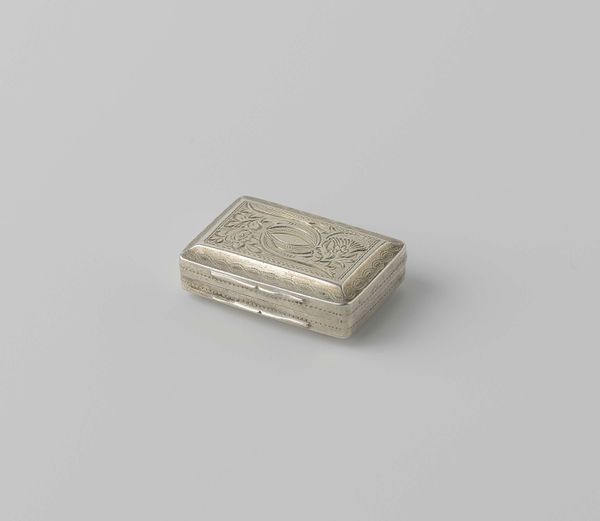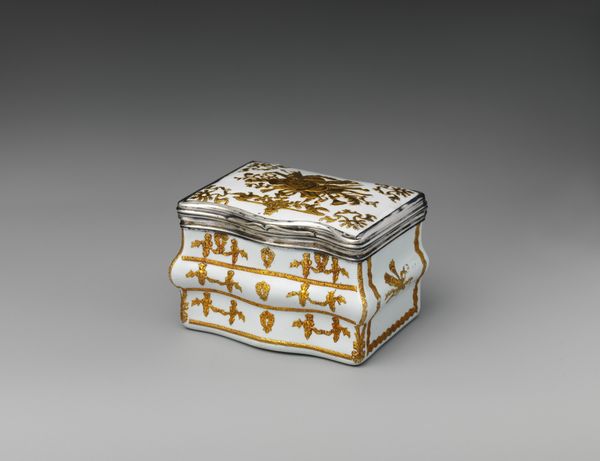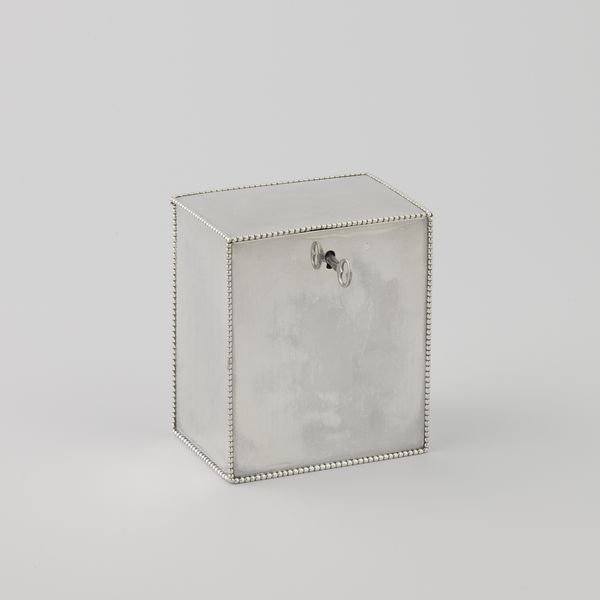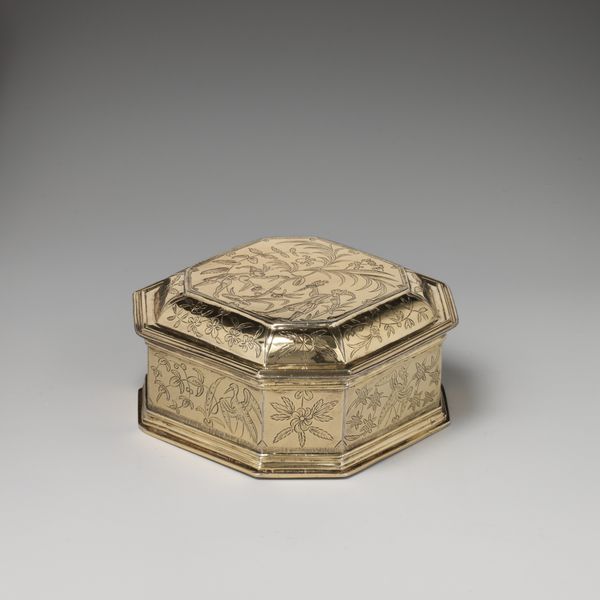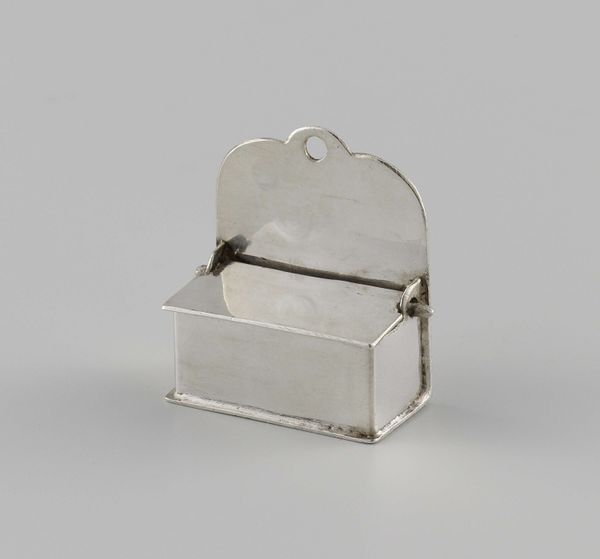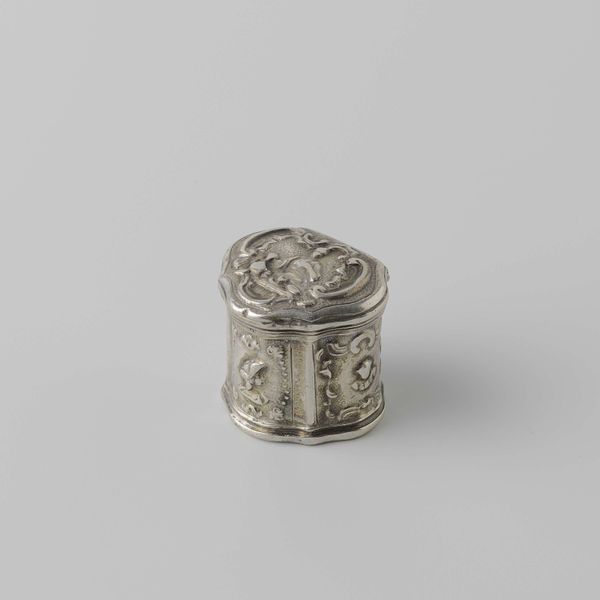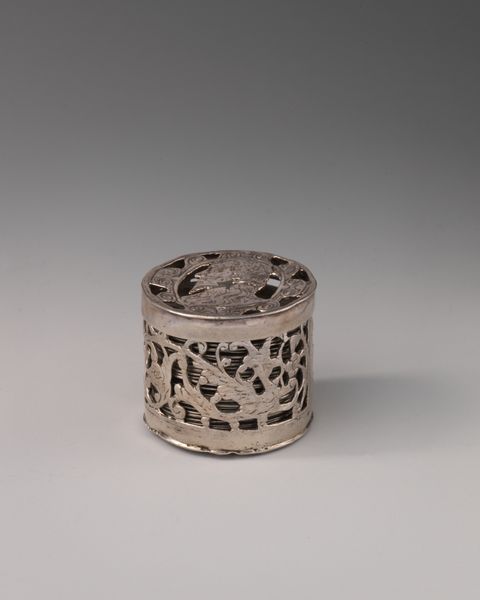
Copyright: Rijks Museum: Open Domain
Editor: We're looking at a piece from between 1784 and 1798, "Coffee Pot in the Shape of a Secretaire," made of metal by Adrianus Kuylenburg. It's currently housed at the Rijksmuseum. I'm struck by how meticulously the metal has been shaped to mimic the form of a writing desk. What stands out to you? Curator: Note the meticulous detailing in the overall form. It recalls the Rococo period. The piece exemplifies form dictating content, transcending the utilitarian purpose of holding coffee and evolving into an autonomous artistic structure. Editor: That’s interesting. So, are you suggesting it is less about its function and more about its artistic expression? Curator: Precisely. Observe how the lines, both the verticality of the object and horizontal demarcations of each drawer, draw the eye. What about the engraved floral ornamentation—where does that take your eye? Editor: I see how the floral designs add softness, playing with the severe lines of the desk. I can appreciate the intention is less function and more sculptural form. It seems to mimic function with form and decorative patterns, and the silvery, smooth material offers a tactile sensory experience. Curator: I agree. The silvery texture is vital to the appeal, but it doesn’t make it a purely tactile work as it demands our analysis of its symbolic order. The piece is now appreciated because its structural properties are considered artistic. The symbolic coffee becomes purely the material of art. Editor: Thank you. I have gained a lot by focusing less on representation and more on the composition of design and form, thanks to your formalism viewpoint.
Comments
No comments
Be the first to comment and join the conversation on the ultimate creative platform.
